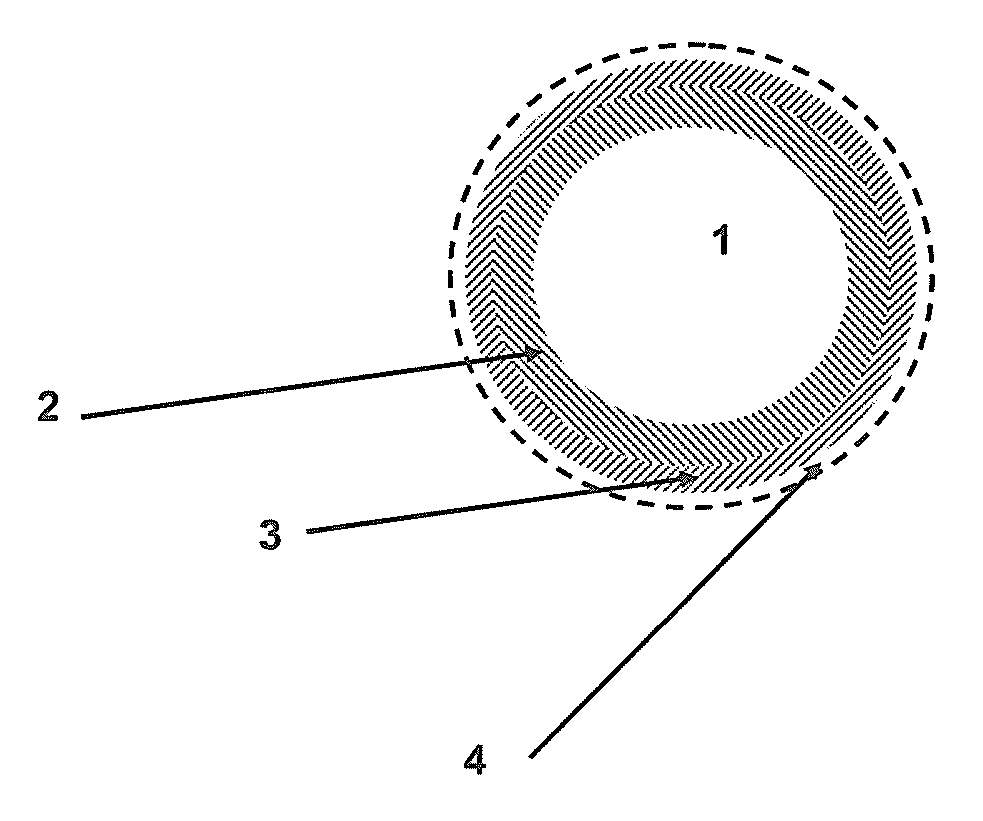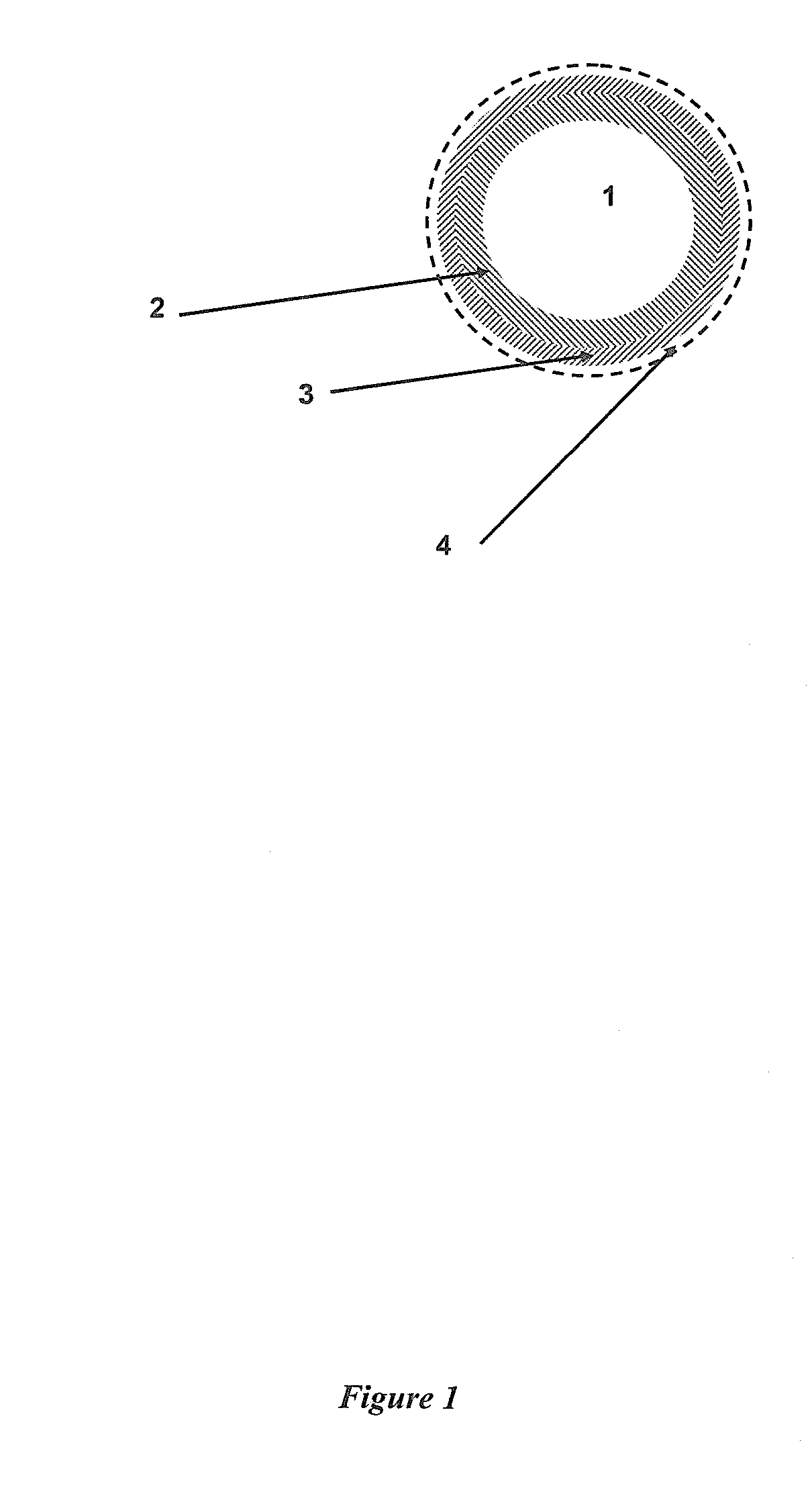Off-white and gray autodeposition coatings
an autodeposition coating and gray technology, applied in the direction of tyre parts, conductive materials, organic compounds of the group 4/14 element, etc., can solve the problems of insufficient hiding power for many commercial uses, limited black color of autodeposition coatings, and difficulty in achieving the effect of increasing weight or thickness
- Summary
- Abstract
- Description
- Claims
- Application Information
AI Technical Summary
Benefits of technology
Problems solved by technology
Method used
Image
Examples
example 1
[0060]A 35% non-volatile, off-white autodeposition coating composition concentrate was formulated as follows:
[0061]To a 1.5 liter container, were added 211.65 g of deionized water, 5.63 g of anionic surfactant having 20% non-volatile (active), 786.4 g of anionically modified polymer emulsion having 42+ / −1% non-volatile, and 132.6 g of TiO2 pigment slurry having 50+ / −1% non-volatile. The active pigment to polymeric binder ratio was 20%. The TiO2 pigment in the slurry was described by the manufacturer as having a first inner layer of zirconia and alumina and a second outer layer of polyether polyol. The TiO2 pigment and the polymer particles remain uniformly dispersed in the concentrate.
example 2
[0062]A 6% non-volatile, 20 ml Fe titration, off-white autodeposition coating bath was formulated using the composition of Example 1, as follows:
In a 1.5 liter container, the following were combined:
[0063]
5.20 g HF1.70 g Iron powder3.62 g Hydrogen peroxide 35%Distilled water to make 1.0 liter
The material was mixed for several minutes. 257.1 g of the composition of EXAMPLE 1 was added to the 1.5 liter container slowly with agitation. Finally, sufficient distilled water to make 1.5 liters was added. The bath was mixed for one hour and bath parameters were adjusted to the following parameters under continuous agitation:
[0064]
Redox Value275-400 mVLineguard 101 meter reading100-700 microamperesTotal % non-volatile1-10%Wet coating solids20-50%Starter titration10-40 mlBath temperature20-25° F.Conductivity1,200-10,000 microsiemens
After the off-white bath was prepared and parameters optimized, metallic panels were treated according to the following method:[0065]A. Cleaning with alkaline clea...
example 3
[0072]A 35% non-volatile, grey autodeposition coating composition concentrate was formulated as follows:
[0073]To a one-liter flask, were added 211.14 g of deionized water, 5.63 g of anionic surfactant having 20% non-volatile (active), 3.38 g of black pigment slurry having 30% non-volatile, 786.4 g of anionically modified polymer emulsion having 42+ / −1% non-volatile, and 132.6 g of the TiO2 pigment slurry of Example 1 having 50+ / −1% non-volatile. The active pigment to polymeric binder ratio was 20%.
[0074]A 6% non-volatile, 20 ml Fe titration, gray autodeposition coating bath was formulated using the composition of Example 3, according to the procedure of Example 2.
The bath was mixed for one hour and bath parameters were adjusted to the parameters of Example 2 under continuous agitation.
[0075]After the gray bath was prepared and parameters optimized, metallic panels were treated according to the method of Example 2. The resulting coated panels were gray in color, were uniform in color...
PUM
| Property | Measurement | Unit |
|---|---|---|
| concentration | aaaaa | aaaaa |
| concentration | aaaaa | aaaaa |
| concentration | aaaaa | aaaaa |
Abstract
Description
Claims
Application Information
 Login to View More
Login to View More - R&D
- Intellectual Property
- Life Sciences
- Materials
- Tech Scout
- Unparalleled Data Quality
- Higher Quality Content
- 60% Fewer Hallucinations
Browse by: Latest US Patents, China's latest patents, Technical Efficacy Thesaurus, Application Domain, Technology Topic, Popular Technical Reports.
© 2025 PatSnap. All rights reserved.Legal|Privacy policy|Modern Slavery Act Transparency Statement|Sitemap|About US| Contact US: help@patsnap.com


